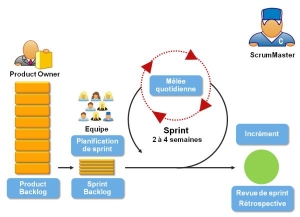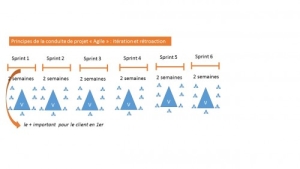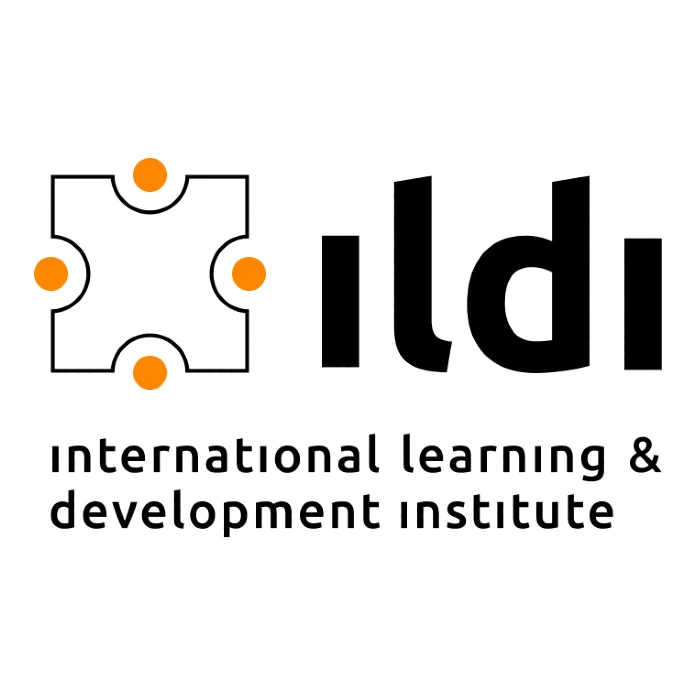
La #formation agile pour aller à l’essentiel
Les méthodes agiles, loin de se limiter au développement informatique, se déclinent désormais dans le management et la formation. Avec elles, l’important n’est pas une solution parfaite, mais un système qui répond aux demandes de l’utilisateur. Un concept qui marche aussi bien dans la production de ressources pédagogiques que dans l’animation de formation. Attention, ça décoiffe !
[one_fourth spacing= »yes » last= »no » center_content= »no » hide_on_mobile= »no » background_color= » » background_image= » » background_repeat= »no-repeat » background_position= »left top » border_size= »0px » border_color= » » border_style= »solid » padding= » » margin_top= » » margin_bottom= » » animation_type= »0″ animation_direction= »down » animation_speed= »0.1″ class= » » id= » »]
 [/one_fourth]
[three_fourth spacing= »yes » last= »yes » center_content= »no » hide_on_mobile= »no » background_color= » » background_image= » » background_repeat= »no-repeat » background_position= »left top » border_size= »0px » border_color= » » border_style= »solid » padding= » » margin_top= » » margin_bottom= » » animation_type= »0″ animation_direction= »down » animation_speed= »0.1″ class= » » id= » »]
[/one_fourth]
[three_fourth spacing= »yes » last= »yes » center_content= »no » hide_on_mobile= »no » background_color= » » background_image= » » background_repeat= »no-repeat » background_position= »left top » border_size= »0px » border_color= » » border_style= »solid » padding= » » margin_top= » » margin_bottom= » » animation_type= »0″ animation_direction= »down » animation_speed= »0.1″ class= » » id= » »]
De la #méthode agile à la formation agile
L’approche Agile trouve son origine dans l’informatique, notamment dans la création et le développement de logiciel. Elle consiste à proposer une base de travail, qui se veut adaptable, souple et évolutive, et qui implique beaucoup plus le demandeur ou le client dans un dialogue et une écoute réciproque que l’approche dite traditionnelle. Les RH se sont déjà réappropriés le concept. Maintenant c’est au tour de la formation.
(cf. Exemple d’organisation de projet agile)
[/three_fourth][one_fourth spacing= »yes » last= »no » center_content= »no » hide_on_mobile= »no » background_color= » » background_image= » » background_repeat= »no-repeat » background_position= »left top » border_size= »0px » border_color= » » border_style= »solid » padding= » » margin_top= » » margin_bottom= » » animation_type= »0″ animation_direction= »down » animation_speed= »0.1″ class= » » id= » »]
 [/one_fourth]
[three_fourth spacing= »yes » last= »yes » center_content= »no » hide_on_mobile= »no » background_color= » » background_image= » » background_repeat= »no-repeat » background_position= »left top » border_size= »0px » border_color= » » border_style= »solid » padding= » » margin_top= » » margin_bottom= » » animation_type= »0″ animation_direction= »down » animation_speed= »0.1″ class= » » id= » »]
[/one_fourth]
[three_fourth spacing= »yes » last= »yes » center_content= »no » hide_on_mobile= »no » background_color= » » background_image= » » background_repeat= »no-repeat » background_position= »left top » border_size= »0px » border_color= » » border_style= »solid » padding= » » margin_top= » » margin_bottom= » » animation_type= »0″ animation_direction= »down » animation_speed= »0.1″ class= » » id= » »]
Méthode et formation agile, quel intérêt ?
La méthode agile n’a pas seulement pour but de révolutionner la façon de travailler des entreprises pour le plaisir de tout bouleverser. L’objectif, bien sûr, est de proposer une solution de travail plus dynamique, fonctionnelle et efficace, qui permet à chaque acteur d’avancer au sein d’un projet, en fonction de son rythme et de ses attributions. L’idée est de faire évoluer le projet, ou ici la formation, par étapes, aussi appelés sprints. On se concentre sur un sujet donné, et une fois que celui-ci est résolu ou acquis, il est temps de passer à l’étape suivante ou sprint suivant. De cette façon, on ne résout qu’une problématique ou point bloquant à la fois, sans être stoppé dans sa course, par plusieurs freins. D’où des résultats plus performants.
(cf. La Transformation agile, une réponse au défi du numérique)
[/three_fourth][one_fourth spacing= »yes » last= »no » center_content= »no » hide_on_mobile= »no » background_color= » » background_image= » » background_repeat= »no-repeat » background_position= »left top » border_size= »0px » border_color= » » border_style= »solid » padding= » » margin_top= » » margin_bottom= » » animation_type= »0″ animation_direction= »down » animation_speed= »0.1″ class= » » id= » »]
 [/one_fourth]
[three_fourth spacing= »yes » last= »yes » center_content= »no » hide_on_mobile= »no » background_color= » » background_image= » » background_repeat= »no-repeat » background_position= »left top » border_size= »0px » border_color= » » border_style= »solid » padding= » » margin_top= » » margin_bottom= » » animation_type= »0″ animation_direction= »down » animation_speed= »0.1″ class= » » id= » »]
[/one_fourth]
[three_fourth spacing= »yes » last= »yes » center_content= »no » hide_on_mobile= »no » background_color= » » background_image= » » background_repeat= »no-repeat » background_position= »left top » border_size= »0px » border_color= » » border_style= »solid » padding= » » margin_top= » » margin_bottom= » » animation_type= »0″ animation_direction= »down » animation_speed= »0.1″ class= » » id= » »]
La formation agile, en pratique
Pour que cela fonctionne en terme de formation, il faut accepter de co-créer avec l’apprenant au fur et à mesure de ses besoins, il faut tâtonner parfois, faire proposition sur proposition, jusqu’à arriver au but : permettre au collaborateur d’intégrer de nouveaux savoirs qu’il pourra mettre rapidement en pratique au sein de son entreprise. La méthode agile en formation vise donc à mettre en avant les besoins des collaborateurs plus que des outils. Cas concret : au lieu de passer en revue toutes les fonctionnalités d’un logiciel, le #formateur veillera à mettre en avant celles qui auront le plus de sens pour le collaborateur. Il pourra encore laisser de côté les plans de cours pour s’adapter davantage aux nouvelles données pouvant intervenir en cours de formation.
(cf. Manifeste pour la création agile de formations)
[/three_fourth][one_fourth spacing= »yes » last= »no » center_content= »no » hide_on_mobile= »no » background_color= » » background_image= » » background_repeat= »no-repeat » background_position= »left top » border_size= »0px » border_color= » » border_style= »solid » padding= » » margin_top= » » margin_bottom= » » animation_type= »0″ animation_direction= »down » animation_speed= »0.1″ class= » » id= » »]
 [/one_fourth]
[three_fourth spacing= »yes » last= »yes » center_content= »no » hide_on_mobile= »no » background_color= » » background_image= » » background_repeat= »no-repeat » background_position= »left top » border_size= »0px » border_color= » » border_style= »solid » padding= » » margin_top= » » margin_bottom= » » animation_type= »0″ animation_direction= »down » animation_speed= »0.1″ class= » » id= » »]
[/one_fourth]
[three_fourth spacing= »yes » last= »yes » center_content= »no » hide_on_mobile= »no » background_color= » » background_image= » » background_repeat= »no-repeat » background_position= »left top » border_size= »0px » border_color= » » border_style= »solid » padding= » » margin_top= » » margin_bottom= » » animation_type= »0″ animation_direction= »down » animation_speed= »0.1″ class= » » id= » »]
La formation agile, un défi RH
C’est aujourd’hui le rôle des ressources humaines de développer au sein de l’entreprise cette méthode agile, tant d’un point de vue managérial, que de celui de la formation. Le management agile permet aux équipes de mieux travailler entre elles, dans un intérêt commun, qui reste celui de l’entreprise. Quant à la formation agile, quand elle est initiée par les RH, elle permet aux apprenants et donc aux collaborateurs d’optimiser leur formation et de bénéficier de sessions construites selon leurs besoins et ceux de l’entreprise. Il s’agit donc d’un enjeu tactique majeur pour les RH, qui s’inscrit dans leur rôle de stratège.
(cf. Ce que la méthode agile peut apporter aux projets de formation)
[/three_fourth][one_fourth spacing= »yes » last= »no » center_content= »no » hide_on_mobile= »no » background_color= » » background_image= » » background_repeat= »no-repeat » background_position= »left top » border_size= »0px » border_color= » » border_style= »solid » padding= » » margin_top= » » margin_bottom= » » animation_type= »0″ animation_direction= »down » animation_speed= »0.1″ class= » » id= » »]
 [/one_fourth]
[three_fourth spacing= »yes » last= »yes » center_content= »no » hide_on_mobile= »no » background_color= » » background_image= » » background_repeat= »no-repeat » background_position= »left top » border_size= »0px » border_color= » » border_style= »solid » padding= » » margin_top= » » margin_bottom= » » animation_type= »0″ animation_direction= »down » animation_speed= »0.1″ class= » » id= » »]
[/one_fourth]
[three_fourth spacing= »yes » last= »yes » center_content= »no » hide_on_mobile= »no » background_color= » » background_image= » » background_repeat= »no-repeat » background_position= »left top » border_size= »0px » border_color= » » border_style= »solid » padding= » » margin_top= » » margin_bottom= » » animation_type= »0″ animation_direction= »down » animation_speed= »0.1″ class= » » id= » »]
La formation agile, les enjeux au sein de l’entreprise
Ainsi, dans une société où tout va de plus en plus vite, où la #technologie se transforme tous les six mois, voire tous les deux mois, où les modes de communications sont bousculés par l’essor grandissant d’Internet, la formation des collaborateurs en entreprise est essentielle. Elle leur permet tout simplement de rester dans la course. De la même manière, la formation a elle aussi sa course à mener afin d’avoir toujours un train d’avance, mais surtout pour être en mesure de s’adapter rapidement aux besoins précis d’une entreprise donnée et d’un collaborateur donné. Car ce sont aussi les exigences de ce collaborateur qui doivent être prises en compte, afin qu’il puisse être disponible, motivé et prêt à apprendre tout simplement.
(cf. Comment et pourquoi créer une formation agile en mode agile)
[/three_fourth]Recevez notre NewsLetter thématique dans votre boite eMail tous les lundi matin.

